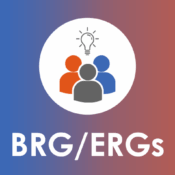
Part 1: Fundamental Mistakes Healthcare Providers Make With Deaf and Hard of Hearing Individuals
Adverse patient experiences and outcomes negatively impact a hospital’s reputation and, subsequently, their bottom line. As such, hospitals have paid amounts in excess of $150,000 in punitive damages for failing to provide Deaf and Hard of Hearing patients and companions with effective communication.
To this end, our clients frequently have many questions about how to best achieve compliance, reduce risk and protect their reputation. So, this three part series will cover some of the fundamental mistakes healthcare providers make in supporting the needs of Deaf and Hard of Hearing patients and companions throughout the entire care continuum.
This first part covers deaf awareness, cultural and sensitivity trainings. Be sure to stay tuned for the next two parts of the series.
Not providing sufficient deaf awareness, cultural and sensitivity trainings
Hospitals can and should proactively change policies and procedures to reduce risk and achieve compliance. While proactive changes are preferred, a failure to supplement these changes by incorporating deaf awareness, cultural sensitivity, and communication access training may render the changes ineffective.
Training should be provided to individuals who encounter patients, including nurses and other point of care workers, to help them understand the impact of encounters with Deaf and Hard of Hearing patients and companions, including the need for effective communication.
“Good patient care is dependent upon effective communication,” states Andrés J. Gallegos, Esq. a shareholder with the law firm of Robbins, Salomon and Patt, Ltd. and member of the National Council on Disability. “All patients must be able to interact with their medical providers, ask questions, and understand what is being asked of them in order to participate in their own healthcare and make informed decisions.”
However, a hospital’s policies and corresponding procedures, or lack thereof, usually become a priority only when facing litigation.
Oftentimes, as a part of settlements or judgments in favor of the plaintiffs, hospitals are often required to revisit policies and procedures, as well as provide training for staff members involved with patient care. While training is much needed, the concern, however, is the list of individuals required to attend training is often not specified and leaves the decision up to the hospital as to who is required to attend the training.
During a recent training I provided at a hospital, one mandated by a settlement agreement, attendees shared they did not know which services and auxiliary aids their hospital provides to Deaf and Hard of Hearing patients and companions except for sign language interpreting services. However, these individuals did not know the process to request sign language interpreters. This is a concern as these very individuals were the ones primarily responsible for appointment scheduling and registration at the hospital in question.
While the attendees undoubtedly benefitted from the training, those who also needed to be trained were not present. This list included nurses, social workers, and patient care assistants, as well as individuals serving as a part of the executive leadership team.
The absence of executive leadership during these types of training illustrates disconnect between executive leadership and patient-facing staff members. Executive leadership needs to fully understand and appreciate the impact their decisions have on improving overall outcomes, including hospital compliance and supporting patient and staff relationships.
Mr. Gallegos of Robbins, Salomon and Patt, Ltd. added, “As it relates to persons who are Deaf or Hard of Hearing, medical providers have several federal legal mandates requiring them to provide appropriate auxiliary aids and services to achieve effective communication with those patients. Beyond satisfying those legal mandates, medical providers should be informed of proper disability etiquette, and deaf culture to become culturally competent, in order to provide the best care possible, and to ensure that there exists an accepting and welcoming environment for persons who are Deaf or Hard of Hearing. If striving to achieve good patient care does not motivate providers to receive that training, providers should consider requiring that training of all applicable healthcare staff to mitigate the likelihood of disability-based discrimination claims from this demographic.”
Communication accessibility and inclusion of Deaf and Hard of Hearing patients and companions needs to be embedded throughout hospitals and understood by all, rather than siloed and assigned to specific departments. A commitment from the top would ensure communication accessibility and inclusion is given priority, credence and becomes ingrained as a part of the hospital’s DNA. It’s a commitment that could help hospitals stay compliant and reduce risk, certainly justifying the expense of providing deaf awareness, cultural and sensitivity trainings.



